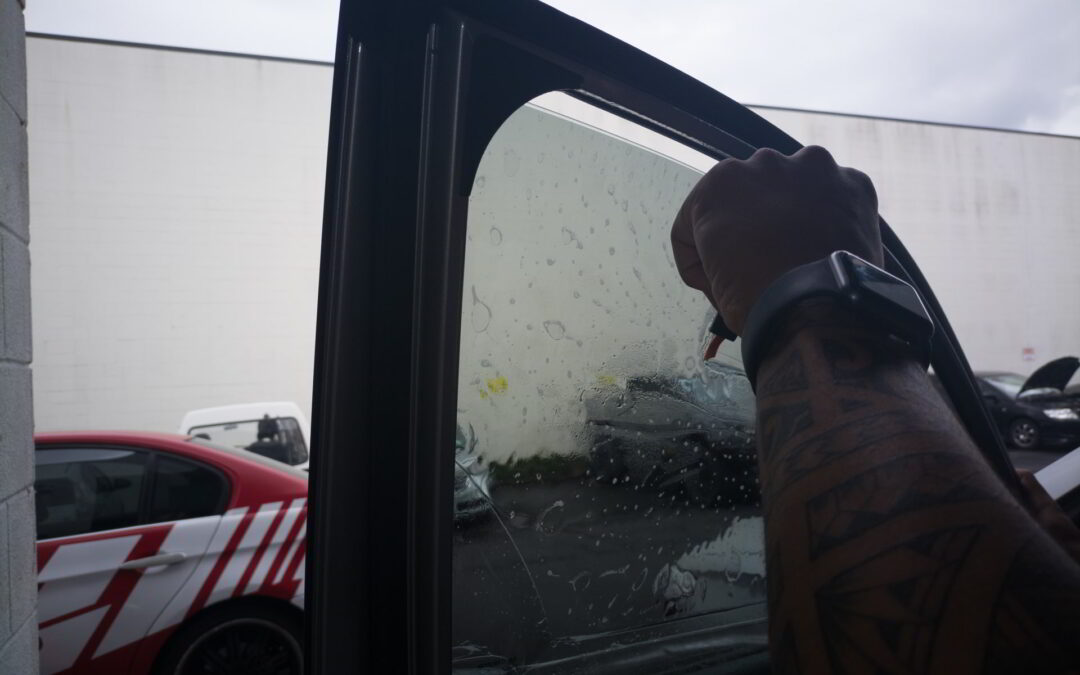Window Tinting for UV Protection – Studio Finish

Why Does UV Protection Matter?
Ultraviolet (UV) radiation, while invisible to the naked eye, carries significant risks to both human health and the condition of our possessions. Its detrimental effects range from immediate issues such as sunburn, to long-term problems including skin aging and even skin cancer. Therefore, mechanisms to prevent or reduce exposure to these harmful rays are vital.
UV radiation can be broken down into three types: UVA, UVB, and UVC. The most significant type from a human health and safety perspective is UVA, accounting for approximately 95% of the UV radiation that reaches the Earth’s surface. Prolonged exposure to UVA rays contributes to skin aging and the onset of skin cancers. Even though the UVC category carries the most energy, its radiation does not reach the earth’s surface, hence posing no direct threat to humans.
Whilst we all love sunshine and its natural vitamin D benefits, unabated UV exposure can wreak havoc on our skin, eyes, and immune system. Excessive UV exposure can result in skin conditions like age spots, wrinkles, hyperpigmentation, and it can damage the eyes, leading to conditions like cataracts and macular degeneration. Additionally, UV rays are immunosuppressive, implying that overexposure can weaken the immune system, making the body more susceptible to infections.
Moreover, the interiors of our homes and vehicles aren’t immune to the damaging effects of UV rays. Over time, these rays can degrade and fade furnishings, upholstery, artwork, and dashboards. Tinted windows can provide a defense against the destructive effects of UV rays, thereby preserving the condition of your possessions.
As such, effective UV protection – whether it’s for your health, property, or peace of mind – is not something to be overlooked. Upholding windows with quality tints that can filter out harmful UV rays are absolutely fundamental. Achieving the highest level of UV protection is not just a desire, but in today’s world, it should be considered a compulsory precaution for our overall well-being.
The Science Behind Window Tinting
The application of a thin film to the inner side of a window – the underlying science governing its functionality is fascinating and intricate. It is based on certain principles of material science and physical chemistry.
The Material Composition
Window tints are primarily made of a polyester base due to its effective balance of flexibility, clarity, and durability. This base material is layered with a series of different chemicals or metals, depending upon the variant of the tint, to achieve the desired results.
The Engineering Process
In general, window tints are constructed using a process known as ‘sputtering’. It is a form of Physical Vapor Deposition (PVD) in which the polyester base layer is placed into a vacuum chamber. In this chamber, argon atoms bombard the chosen chemical or metal, causing the atoms to detach and stick to the polyester base, thereby creating a thin, durable, and uniform layer.
UV Absorption and Reflection
What is remarkable about the films developed through sputtering is their ability to absorb and reflect UV radiation. The specific molecular structure of the film elements causes UV photons to vibrate these molecules rather than penetrate through the layer. This vibration transforms the harmful UV energy into thermal energy, which is then emitted back, effectively blocking UV radiation from entering through the window.
Tint Variants
The selection of window tints can be an involved process, with a myriad of options available to the discerning consumer. Both vehicle and residential tints come in a variety of types, each with their specific feature, and potential benefits. These options allow for customized protection and aesthetics based on the individual’s specific needs.
Vehicle Window Tints
Vehicle window tints are primarily engineered to battle harmful UV rays, but also significantly minimize heat, reduce glare, and enhance the vehicle’s security and aesthetics. Here are the prominent types of vehicle tints:
| Type of Tint | Features |
|---|---|
| Dyed Window Tint | Aesthetic appeal, minimal UV protection |
| Metallized Tint | Heat reduction, UV protection, increased strength |
| Carbon Window Tint | UV protection, Heat reduction, no signal interference |
| Ceramic Tint | High UV protection, superb heat reduction, no signal interference |
Residential Window Tints
For residential windows, tints are typically applied for reasons that extend beyond UV protection. Homeowners install these tints to enhance privacy, conserve energy, and reduce glare among other reasons. The common types are:
| Type of Tint | Features |
|---|---|
| Decorative Tint | Improves aesthetics, provides minimal privacy |
| Security Tint | Enhanced security, UV protection |
| Solar Tint | UV protection, glare reduction, energy efficiency |
| Insulating Tint | Energy efficiency, UV protection, heat reduction |
You may recall a time when window tints served mainly to add appeal and provide privacy. However, the growing awareness of the dangers posed by prolonged exposure to UV rays has shifted the attention to safety. Today’s array of tinting options caters to this need, providing a shield against harmful UV radiation for both vehicles and homes alike.
In essence, the science behind window tinting relies on proven engineering processes and material science principles to deliver a product capable of offering UV protection. With the right selection, depending on the purpose and desired results, window tinting provides an efficient and effective solution to block harmful UV radiation. The value of this accomplishment, considering the hazardous impacts of UV rays, is apparent in the following sections.
Reducing the Risk of Skin Cancer
Excessive and habitual exposure to ultraviolet (UV) radiation has been scientifically proven to significantly contribute to the occurrence of skin cancer. It is undeniable that both vehicles and residential spaces can potentially expose occupants to high levels of UV radiation, particularly when their windows lack the safeguard of tinted materials.
However, reconfiguring such exposure factors is indeed within one’s control. The strategic tinting of windows serves as one such accessible and effective solution for reducing the risk of skin cancer. You may wonder, to what extent does window tinting actually contribute to mitigating skin cancer risks? In response to this valid query, consider the findings of studies conducted by the Skin Cancer Foundation.
“The application of professionally installed window film to both vehicles and homes has the ability to block over 99% of harmful UV rays. Consequently, tinting holds the potential of becoming a critical tool in the preventative strategy against skin cancers influenced by UV exposure.”
These findings shed substantial light on the significance of window tinting in the sphere of public health. How does this occur? Firstly, by providing effective and potent shields against UV radiation, the incursion of harmful rays into the indoor environment is significantly diminished, thereby reducing the overall exposure to harmful rays.
Secondly, the accumulation of such exposure over time constitutes a primary factor responsible for skin cancer development. Hence, reduced radiation implies a lessened probability of malignancy, thereby rendering window tinting as more than just a simple decorative modification to your spaces.
In a broader perspective, the cumulative benefits rendered by window tinting establish it as an invaluable line of defense against skin cancer induced by UV exposure. This insight can prompt you as a homeowner or vehicle owner to reflect on the potential contribution you can make towards safeguarding the health of yourself and your family by opting for professional window tinting services.
The role of window tinting in reducing the risk of skin cancer, thus, ceases to be unproved supposition and instead becomes a verifiable fact backed by significant scientific credentials.
Enhancing the Safety of Your Vehicle and Home
UV rays -often unnoticed but ever-present threats, pour into your vehicle’s interior and your home’s rooms through the windows, but did you know that beyond the health risks, they can also jeopardize the safety of your possessions? That’s where window tinting comes into the picture. By augmenting the protective qualities of your windows, window tinting enhances both your vehicle and home safety, serving as a silent sentinel against a range of invasions.
Window Tinting and Vehicle Safety
When installed on a vehicle, window tints not only act as an effective shield against harmful UV rays but also offer an additional layer of security. How, you might ask? Firstly, a well-tinted car window is harder for potential burglars to see through. This reduced visibility implies an intrinsic deterrent, as thieves are less likely to break into a vehicle if they’re unsure of what lies within. So, vehicle tinting is thus a proven theft deterrent.
“In addition to providing UV protection and security, window tinting offers enhanced privacy and aesthetic appeal. It can transform an ordinary vehicle into a sleek, stylish ride.”
Furthermore, window tinting can prevent the glass from shattering during an accident. The film holds the shattered glass together, acting as a safety barrier between the occupants and potential glass shards. This can considerably reduce the risk of glass-related injuries in the event of a collision or impact.
Window Tinting and Residential Safety
Residential windows can also significantly benefit from window tinting. Just as in vehicles, window tint can provide an additional level of privacy, deterring potential intruders who can’t see easily into your home. This layer of enhanced privacy not only helps safeguard your valuable possessions but also creates an increased sense of personal safety and comfort.
An often overlooked yet significant safety improvement that tinted windows bring to residences is the reduction in the risk of window shattering incidents. Whether resulting from natural disasters or accidental impacts, shattered windows pose a severe risk of injury due to flying glass.
An often overlooked yet significant safety improvement that tinted windows bring to residences is the reduction in the risk of window shattering incidents. Whether resulting from natural disasters or accidental impacts, shattered windows pose a severe risk of injury due to flying glass. Tinted windows, however, help hold the glass pieces together, much like they
do with vehicle safety. This mechanism greatly diminishes the risk of glass injury, furthering the idea that window tinting is an investment in safety equiparable to high-quality security systems.
In conclusion, window tinting does a great job of protecting against hazardous UV rays. It serves to safeguard vehicle and home interiors, preserving their aesthetic appeal, and, more importantly, ensuring the health and safety of the occupants.


Recent Comments